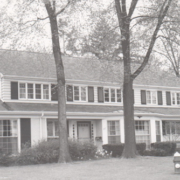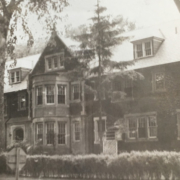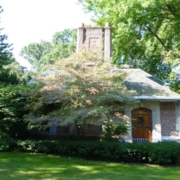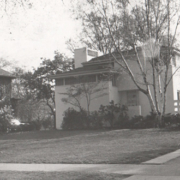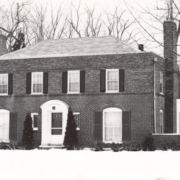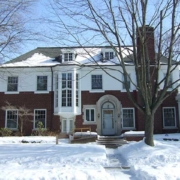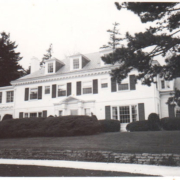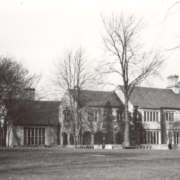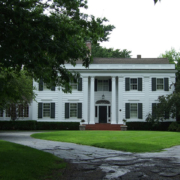Historical Architecture of Grosse Pointe – The Dodge Mansion and The Houses on Harbor Hill
Once upon a time, many years ago there was a very successful auto baron by the name of John Dodge. The Dodge family moved to Detroit in 1886, where the two young brothers John and Horace took jobs at a boiler maker plant.
In 1900 John and Horace set up their own machine shop in Detroit. During their first year in business together the brothers’ were making parts for the automobile industry. Success came very quickly. Having won a contract to build transmissions for the Olds Motor Vehicle company in 1902 they were then contracted to build engines for Henry Ford, a deal that also included a share position in the new Ford Motor Company.
By 1910 they had built a plant in Hamtramck, and John was vice president at Ford. In 1913 John left Ford and joined forces again with his brother to form ‘Dodge Brother’s’, where they developed their own line of automobiles. By October 1917 they had produced their first commercial car.
Having become extremely rich very quickly the Dodge brothers were known to live rather extravagantly. In 1906 John commissioned a large home in Arden Park (off Woodward), which was designed by Smith, Hinchman and Grylls. In 1907, shortly after marrying his third wife Matilda, he purchased 320 wooded acres near Rochester, Michigan – the first of nine farms he would buy in the area.
In 1918, in order to be closer to his brother Horrace, John Francis Dodge purchased a large plot of land on Lake Shore, Grosse Pointe Farms. He once again hired the prestigious firm of Smith, Hinchman and Grylls to design what was intended to be the largest home in the Detroit area – 110 rooms, and 24 baths. According to research from the book Tonnancour he added a three-acre peninsula to the property (jutting out into Lake St Clair), in order to dock his new 104-foot power cruiser.
After attending an auto show with his brother in New York, 1920 John tragically died of pneumonia. Matilda was understandably devastated and apparently could not decide whether she wanted to finish the vast stone house on Lake Shore. In 1925, after remarrying, Matilda and her new husband moved to the Rochester property that John had purchased in 1907. Research from the Grosse Pointe Historical Society states the new Rochester home ‘incorporated many details (windows, stonework etc) from the unfinished home on Lake Shore’. This left the home as an empty shell, with the local children having great fun playing in an around it for many years. It was finally dismantled in 1940.

Dodge Mansion – Courtesy of Tonnancour by Arthur Woodford
Shortly after the demolition, the land was sold and the plot subdivided into what is now known as Harbor Hill. During the early 1950’s this area was developed with around 20 homes.

Harbor Hill – Courtesy of Bing.com
The majority of the homes were built between 1950 – 1954 in a variety of architectural styles that included colonial, early American, English, and ranch. Noted architects including John L. Pottle and Omer C. Bouschor designed several homes.
Below is a glimpse into many of the homes found on Harbor Hill, with house number 38 providing us with a rather interesting story.
Number 21 – Built in 1951

Number 23 – Colonial built in 1951

Number 25 – Colonial built in 1952.
This home recently came onto the market for only the second time in its history.

Number 26 – Colonial built in 1951.
Designed by Omer C. Bouschor this is a gracious colonial home with a central entrance and a two-story foyer. Constructed from brick this 3,877 sq ft home features a sweeping staircase, a servant’s wing over the garage, and a large Palladian window on the second floor above the main entrance.

Number 27 – Early American style home built in 1953, designed by John L. Pottle.
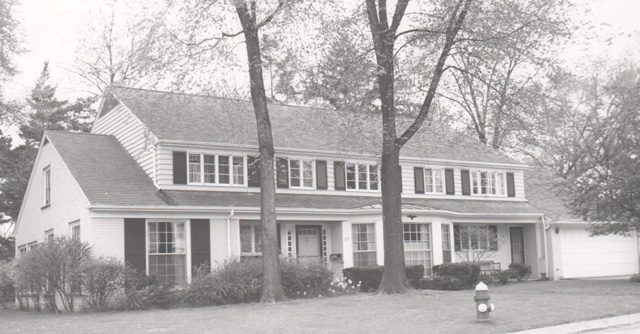

Number 28 – Colonial built in 1952.

Number 30 – Colonial built in 1952, designed by John L. Pottle.

Number 31 – English style home built in 1952.

Number 32 – Early American style home built in 1954, designed by John L. Pottle.

Number 34 – Colonial built in 1952.

Number 35 – Colonial built in 1953.

Number 36 – Contemporary built in 1953.

Number 38 – Colonial built in 1956.
This home has a fascinating story to share. From our research we understand when this house was built the decision was made to use the existing coal bin from the original Dodge mansion as its basement. We believe the colossal 40’ x 60’ sq ft coal bin was located about 100ft from the main house. It originally contained five manholes in the ceiling, with bricked openings leading to a workroom and the main house by way of a tunnel.
The engineers report at the time determined the walls of the bunker were constructed from steel reinforced one-foot thick concrete, and were strong enough to support a large commercial building, let a lone the 3,760 sq ft colonial home, now known as house number 38.

Number 39 – Ranch built in 1950.

Number 40 – Colonial built in 1952.

Number 42 – Colonial built in 1952.

Number 44 – Ranch built in 1951.

The houses on Harbor Hill are situated on a spectacular location. The man-made peninsula that John Dodge created for his yacht still exists and is enjoyed as a private park by the streets residents. The story of John Dodge and his vast mansion on Lake Shore may not have had a truly happy ending, but the history of this land certainly makes for an interesting story, and it is an important part of Grosse Pointe history.
*Photos courtesy of the Higbie Maxon Agney archives unless stated.
Written by Katie Doelle
Copyright © 2016 Katie Doelle

